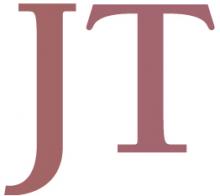You are here
Fighting the argileh epidemic
Aug 05,2014 - Last updated at Aug 05,2014
Almost a quarter of a century ago, water pipes were rare in Jordan; mostly smoked by elderly men at a few cafés in main towns.
All this changed gradually in the 1990s as smoking the hubble-bubble, known in Jordan as argileh, started getting more and more popular with the opening of more cafés intended for youngsters.
This habit was gradually adopted by new, younger users, including females who rarely smoked in public for social and other considerations.
These youngsters, male and female, were lured by the flavourings and other additives introduced to the tobacco, also called muassel, which means honeyed. Thus a whole new generation was brought into the world of tobacco by the introduction of muassel, whose flavours include apple, strawberry, mint, lemon and other fruit-based mixes.
Smoking one argileh is equivalent to smoking 60 cigarettes, according to health experts, so fruity or not, it remains a bad habit that is blamed for many illnesses and should be fought with all means, starting with legislation.
In the European Union, member states now have two years to incorporate regulations into their national laws to make tobacco products less attractive to younger people by banning small packs and flavours, in addition to placing larger warnings on cigarette packs covering 65 per cent of their surface.
Jordan can imitate the move.
Furthermore, the Public Health Law, which prohibits smoking in public places, should be activated at restaurants and cafés despite the pressure by owners of such places and deputies representing them, with claims that such a measure would lead to the closure of their business and lead to more unemployment.
For these people raising the number of the sick and deaths caused by smoking can be a better reason to ban smoking in public places.
Also, taxes on tobacco products should be increased, with the difference used to cover the costs of treatment of people suffering from smoking-related diseases.
At the same time, efforts should be doubled to fight smuggling which has been used as an excuse to lower taxes.
Jordan has the highest prevalence of smoking in the region, and it is on the rise, according to officials.
Moreover, 40 per cent of the 5,000 cancer cases diagnosed in the Kingdom annually are caused by smoking.
Sixty per cent of Jordanian men are smokers, and 30 per cent of those aged between 13 and 15 smoke.
Jordanians spend an estimated JD800 million on tobacco products annually, and almost a similar amount on treating diseases caused by tobacco. This brings the total to almost JD1.6 billion a year, an amount that can be saved on better causes by smokers and their families, as well as the country as a whole.
Thus, the government and the country as a whole can make a good investment in fighting smoking, particularly among young Jordanians and those who are hooked to the habit yet.
In addition, more can be spent on stop smoking clinics, media campaigns and educational materials, which should be distributed to schools in order to dissuade children from joining the ranks of smokers.
A study conducted in four of the capital’s schools showed that 13 per cent of students in the sixth grade smoke argileh.













